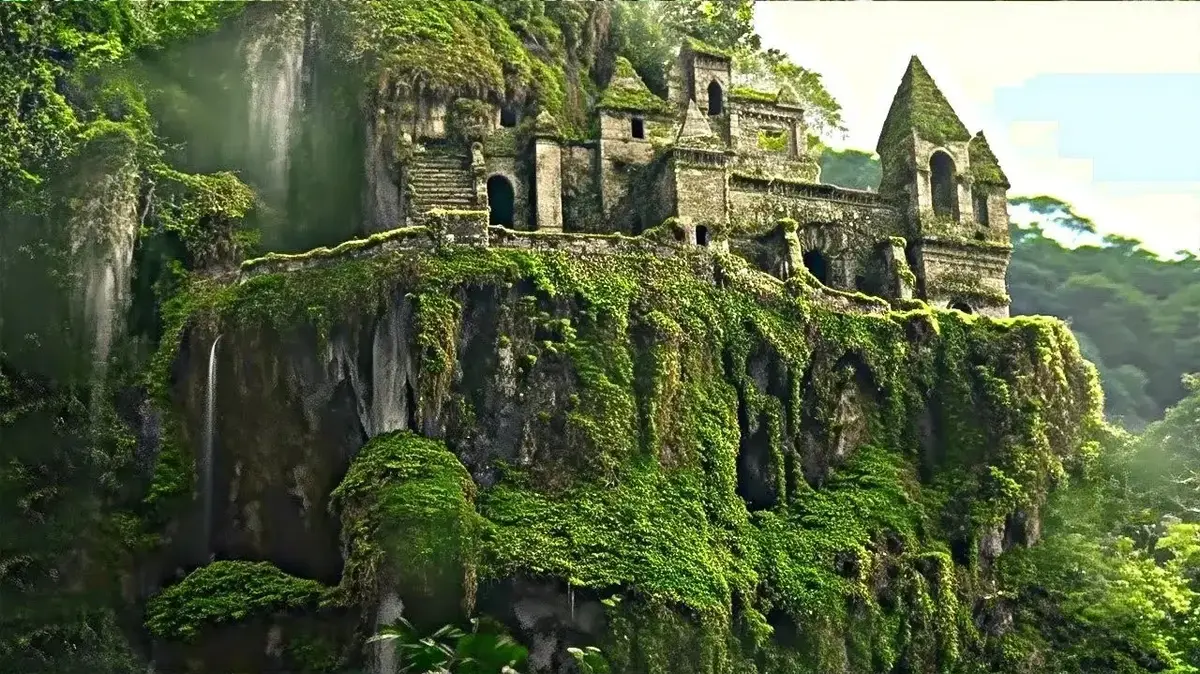Rafting on the Ofano River in Ecuador/@ArutamEcotoursEcuador
Jungle-penetrating lasers have revealed ruins of ancient cities hidden in the Amazon.
This vast network of settlements, located in the Ofano Valley in Ecuador and long lost, shows how South America was rich with a very complex human culture long before Christopher Columbus came to visit.
These vast urban settlements were recently revealed thanks to 20 years of interdisciplinary research that included fieldwork and light detection and ranging (LIDAR) mapping.
The revolutionary imaging technology, which uses a laser from the sky (distance measurement technology by illuminating the target with a laser beam, and measuring the time it takes for the light beam to return to the receiver), allows researchers to scan vast areas of land and identify imprints of hidden structures that are not always visible to the naked eye.
In recent times, archaeologists have found a huge number of pre-Columbian settlements in the Amazon basin that remained undetected for hundreds, if not thousands of years.
However, this new study represents the earliest and largest example of Amazonian urbanism discovered to date.
View this post on Instagram
A post shared by New Scientist (@newscientist).
The newly discovered civilization first appeared about 2,500 years ago with significant construction occurring between 500 BC and 600 AD. The extensive network of cities consists of at least 15 distinct settlement sites of various sizes, characterized by built platforms and squares connected by large, straight roads.
A natural solution
This is how you will improve performance and pleasure in bed - with an exclusive sale
in collaboration with "Gabra"
View this post on Instagram
A post shared by Ancient Origins (@ancient_origins).
For more bizarre and interesting stories from the world - come to our WhatsApp channel >>>
Among the many findings, the researchers also uncovered prints of about 6,000 rectangular platforms measuring about 20 by 10 meters and reaching a height of up to 3 meters.
The Amazon is not a place for stone mining - so these structures were created from earth and mud.
The researchers describe the settlements as an example of "garden city-style urbanism," in which man-made structures were closely interwoven with agricultural plots, featuring extensive drainage systems and terraces.
More on the subject:
"The City of the Gods Lost in Time" was located in the middle of a dense forest by lasers.
A city that sunk in a lake and was perfectly preserved was discovered and the demand to visit it is increasing
So who built it?
It is not known which of the Andean cultures is responsible for building these cities, which existed long before the Inca Empire took over the region, although in terms of timelines it may be the Tulato culture.
Some say that the European invaders who arrived in South America encountered huge cities when they first set foot in the Amazon, but these settlements have since been swallowed up by the ever-growing jungle.
Inspired by these stories, British explorer Percy Post and his expedition disappeared in 1925 while hunting for the so-called "Lost City of Z," an enigmatic civilization believed to be hiding in Brazil.
These stories are often described as legends, but recent studies like this show that they may have been on to something back then.
"Such a discovery is another vivid example of underestimating the double heritage of the Amazon, environmental but also cultural and therefore indigenous. Like many others, we believe it is essential to fundamentally change our preconceptions about the world of the Amazon," wrote the authors of the study in their conclusions published in the journal Science .
Towards the discovery of El Dorado, the city of gold?
These discoveries once again raise the interest in the fate of El Dorado, the hidden city of gold that is supposedly located somewhere in South America and has never been found and contains - again allegedly - mountains of gold and precious stones.
Researchers have been searching for the mythical city since the 16th century.
According to the myth, El Dorado was the place where the Incas fled with their treasures in 1532.
In 2010, archaeologists located promising remains in satellite images deep in impenetrable jungle in Mato Grosso, Brazil.
They believed that these were the remains of an ancient city, perhaps "El Dorado", written about in the book "Manuscript 512" of a Portuguese researcher from 1753 - who according to him found a walled city - reminiscent of ancient Greece - in the depths of the Amazon forest in Mato Grosso.
Excavations in the area have not yet begun.
More on the same topic:
Amazon
Ecuador

